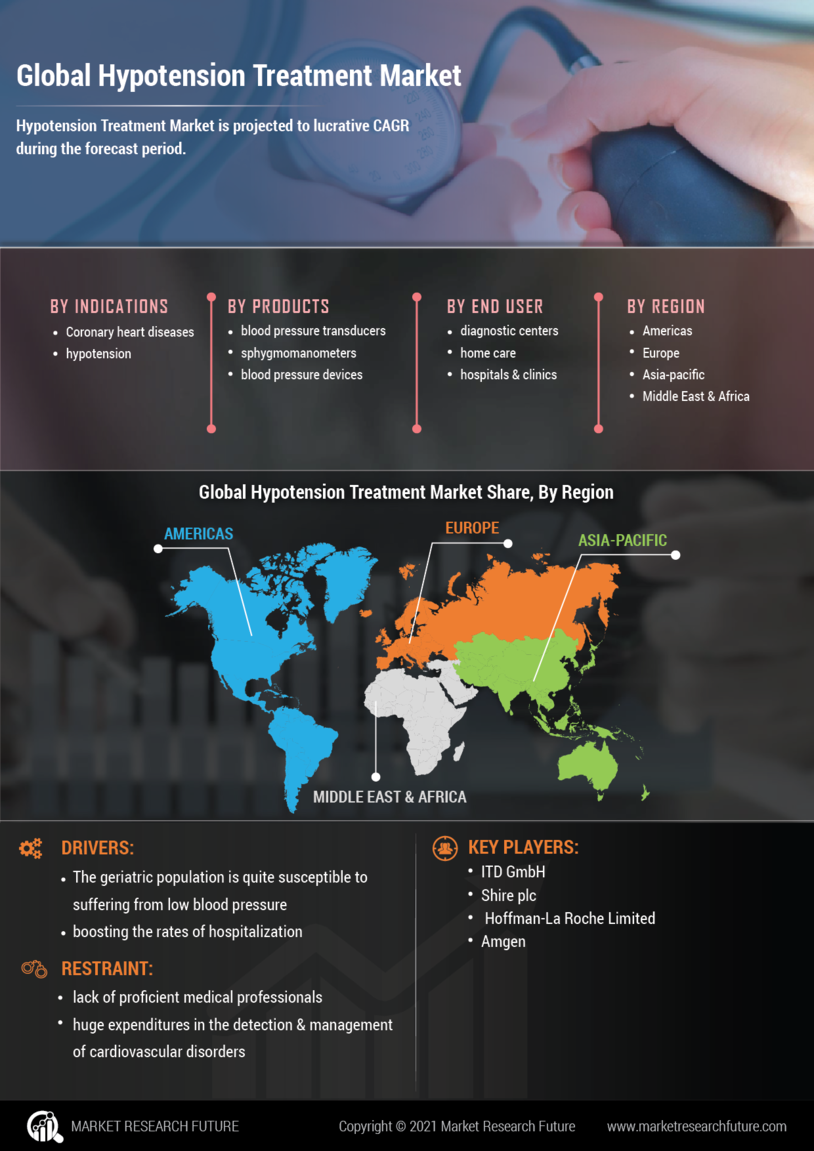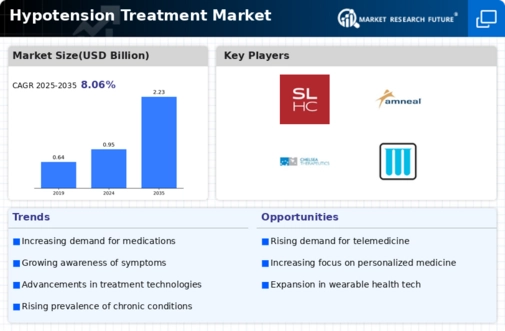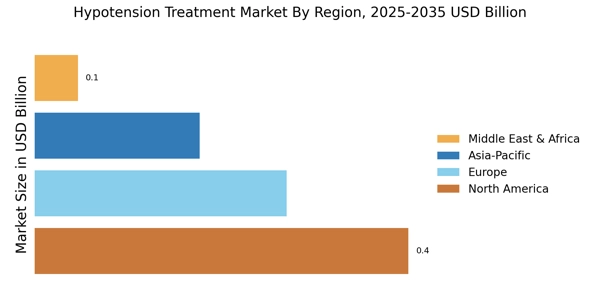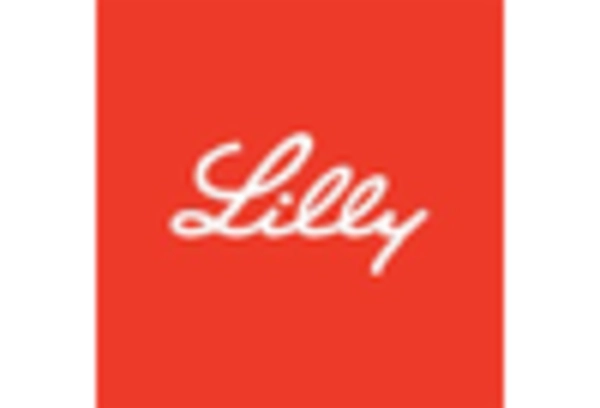Rising Prevalence of Hypotension
The increasing incidence of hypotension, particularly among the elderly population, is a primary driver of the Hypotension Treatment Market. As individuals age, the risk of developing low blood pressure escalates due to various factors such as comorbidities and polypharmacy. Recent studies indicate that approximately 20% of older adults experience some form of hypotension, necessitating effective treatment options. This growing demographic is likely to fuel demand for innovative therapies and management strategies within the Hypotension Treatment Market. Furthermore, the rising awareness of hypotension-related complications, such as falls and fainting, is prompting healthcare providers to prioritize early diagnosis and intervention, thereby expanding the market for hypotension treatments.
Advancements in Pharmaceutical Research
Innovations in pharmaceutical research are significantly influencing the Hypotension Treatment Market. The development of new medications, including vasopressors and mineralocorticoids, has enhanced treatment efficacy and safety profiles. Recent advancements have led to the introduction of combination therapies that target multiple pathways involved in blood pressure regulation. This diversification of treatment options is expected to cater to a broader patient population, including those with resistant hypotension. Market data suggests that the pharmaceutical segment of the Hypotension Treatment Market is projected to grow at a compound annual growth rate of 6% over the next five years, driven by ongoing research and clinical trials aimed at optimizing therapeutic outcomes.
Increased Focus on Preventive Healthcare
The shift towards preventive healthcare is reshaping the Hypotension Treatment Market. Healthcare systems are increasingly emphasizing early detection and management of hypotension to mitigate associated risks. This trend is reflected in the growing adoption of routine blood pressure monitoring and patient education initiatives. As healthcare providers recognize the importance of addressing hypotension proactively, the demand for effective treatment solutions is likely to rise. Additionally, the integration of wearable technology for continuous monitoring may further enhance patient engagement and adherence to treatment regimens. Consequently, this focus on prevention is expected to drive growth within the Hypotension Treatment Market, as stakeholders seek to improve patient outcomes and reduce healthcare costs.
Rising Awareness and Education Initiatives
The heightened awareness surrounding hypotension and its implications is a crucial driver for the Hypotension Treatment Market. Educational campaigns aimed at both healthcare professionals and the general public are fostering a better understanding of the condition. These initiatives are instrumental in promoting early diagnosis and appropriate management strategies. As awareness increases, patients are more likely to seek medical advice and treatment, thereby expanding the market. Furthermore, healthcare providers are increasingly incorporating hypotension management into their practice guidelines, which may lead to improved treatment adherence and outcomes. This growing emphasis on education is expected to contribute positively to the overall growth of the Hypotension Treatment Market.
Technological Innovations in Treatment Delivery
Technological advancements are revolutionizing treatment delivery methods within the Hypotension Treatment Market. The emergence of telemedicine and digital health platforms is facilitating remote monitoring and management of patients with hypotension. These innovations enable healthcare providers to offer personalized treatment plans and timely interventions, enhancing patient engagement. Additionally, the development of mobile applications for tracking symptoms and medication adherence is likely to empower patients in managing their condition. Market analysis indicates that the integration of technology in treatment delivery could lead to a more efficient healthcare system, ultimately driving growth in the Hypotension Treatment Market as patients benefit from improved access to care and tailored treatment options.


















Leave a Comment